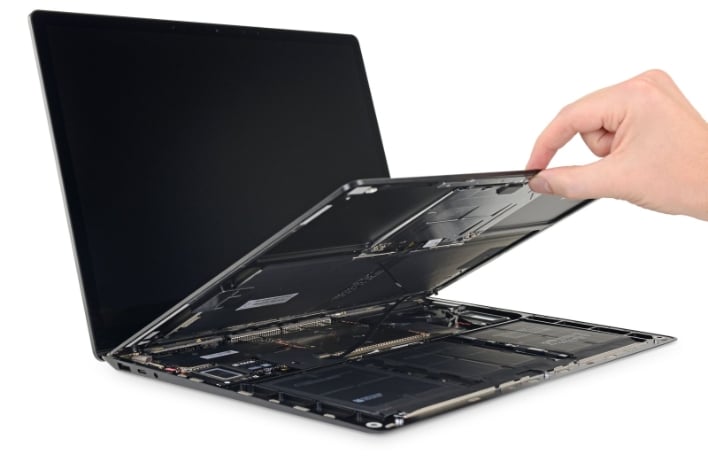Microsoft Surface Laptop 3 Teardown Reveals Modular Design And Magnetic Personality

Thankfully, the folks at iFixit weren’t afraid to get dirty with Microsoft’s latest hardware, and decided to dig in to the 15-inch Surface Laptop 3 powered by an AMD Ryzen 5 3580U processor. Actually getting into the device was a relatively easy affair. After prying off the rubber feet on the bottom of the laptop, the iFixit crew was greeted with a handful of Torx screws.

With the screws removed, the entire top cover/keyboard deck lifts up giving access to the internal components. Instead of using copious amounts of glue to secure the bottom and top halves of the chassis, Microsoft instead opted for a rather ingenious solution involving magnets. Further adding to the ease of accessibility is that the entire top cover attaches to the bottom half with a single flex cable.
Once inside, however, the degree to which the Surface Laptop 3 can be “upgraded” is a bit suspect. For starters, the only typical, off-the-shelf component that is replaceable is the M.2 NVMe PCIe SSD; although that’s still better than nothing. Unfortunately, the RAM is still soldered onto the motherboard. The display is easily removable once the top cover is removed for quick replacements, as is the entire PCB that holds the processor, memory, and other components. Another knock against repairability is that fact that the battery is glued to the lower half of the chassis and stretch-release adhesives aren’t used.

Despite the rather straightforward access to the inside of the chassis and the relatively easy process of upgrading the SSD, iFixit still gave the Surface Laptop 3 a repairability score of just 5 out of 10 due in part to the “intricately layered construction” of the modular components. You can read the full teardown by clicking the following link.

